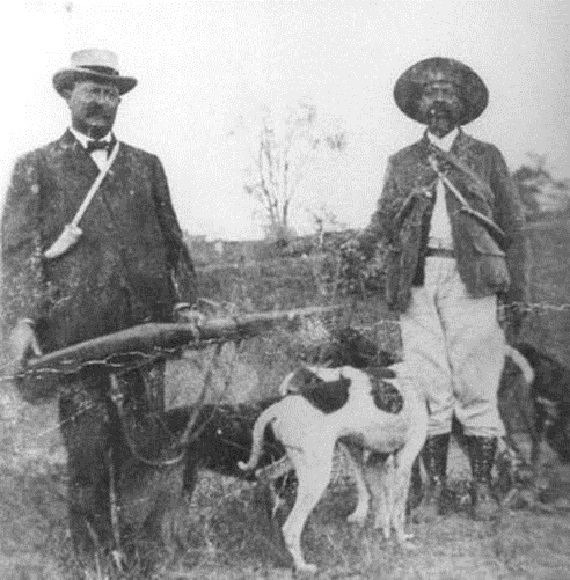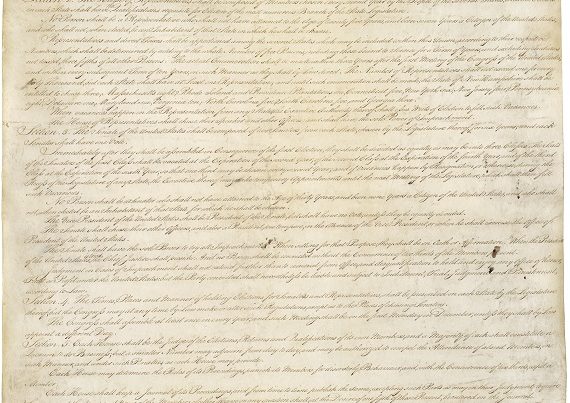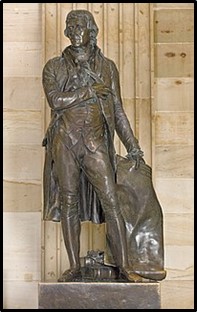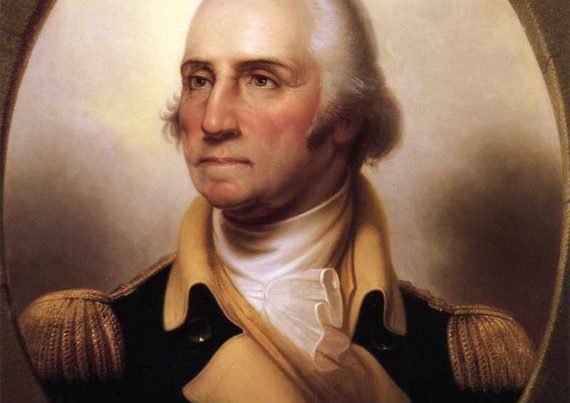
One of the more interesting things about the Civil War is the primary evidence, from Union accounts, that show black men serving as sharpshooters for the Confederacy. Unfortunately today you have men such as Kevin M. Levin, among others, who ignore or gloss over these accounts. In a 2015 article[1] by Ernie Suggs, of The Atlanta Journal-Constitution, states “Boston-based historian Kevin Levin said he has been working on his upcoming book, “Searching for Black Confederate Soldiers,” for eight years and has yet to find one.”
In my research I have come across twenty accounts of black Confederate sharpshooters and they are all Union accounts. History is not as black and white as we make it out to be. History is like a beautiful painting. From a distance it looks very beautiful in passing, but the closer you get to it the more you notice the details, such as brush strokes, their choice of colors, or finding small details that are not noticeable from a distance. This is what studying history is like. It is about being able to see the small details and being able to piece them together so when you step back you see a more complete picture. These accounts help give a more complete picture of the War, while at the same time making it more complicated.
Siege of Yorktown, VA
I found at least three black Confederate sharpshooters at the Siege of Yorktown, VA which took place between April-May 1862. The first sharpshooter is mentioned in an account by a Captain C.A. Stevens, who was a member of Berdan’s First U.S. Sharpshooters. In the regimental history he wrote:
“For a considerable time during the siege the enemy had a negro rifle shooter in their front who kept up a close fire on our men, and, although the distance was great, yet he caused more or less annoyance by his persistent shooting. On one occasion while at the advanced posts with a detail, the writer with his squad had an opportunity to note the skill of this determined darky with his well aimed rifle.”[2]
He continues on to say that they cornered him in a “chimney top” and he was taken out by a Sgt. Andrews.
The second sharpshooter was reported in the Wood County Reporter from Grand Rapids, Wisconsin on May 31, 1862. It states:
“The best work of the morning was reducing to a state of perfect inutility in this mundane sphere, a rebel negro rifleman, who has, through his skill as a marksman, done more injury to our men than any dozen of his white compeers, in the attempted labor of reducing the complement of our sharpshooters. Our men have known him a long time, have kept an eye on him, have lain in wait for him.”
This article states that he perched himself up “in big tree, and keeping himself hid behind the body…” Before he was taken out it tells of how a Union sharpshooter called out to him:
‘I say, big nigger,’ called out one of the Union soldiers, ‘you better come down from there.’
‘What for?’ returned the big nigger.
‘I want you as a prisoner.’
‘Not as this chile knows of,’ replied the concealed Ethiope.
‘Well, just as you say,’ replied our sharpshooter.
An hour after this the Union sharpshooter shot the black Confederate sharpshooter through the head. This account was also published in 1866 in a book by Frazer Kirkland.[3]A more condensed version of this is in a book by Joseph T. Wilson, a member of the 2nd Lousiana Native Guards and the 54th Massachusetts.[4]
A third sharpshooter is mentioned in the The Caledonian of St. Johnsbury, VT, May 9, 1862:
“A tall rebel had frequently shown himself on the enemy’s works, braving the fire of the sharpshooters. The other day he came outside as usual, waving his hat, when two balls went whizzing toward him, but fell short. The rebel continued his observations. Meanwhile a messenger dispatched for a telescopic target rifle known to be in the hands of a sharpshooter, and Col. Berdan and one of his officers, accompanied by two of his men, walked out to see the result as one would go to a bear hunt. Arrived at the point designated, the seven-footer was still there, when the owner of the rifle drew up at arm’s length, and the moment the muzzle fell so as to cover his heart the hair-trigger was touched and the taunting foe fell without a struggle. A skirmish ensued, our sharpshooters trying to prevent the rebels from recovering the body, and it was finally left outside until nightfall.”
This story is later corroborated by Private Alfred Bellard of the 5th New Jersey Volunteers who wrote in his memoirs for his children about 1880 and states that the sharpshooter was a black man:
“On each of our posts was stationed one of Berdan’s sharp shooters, who were always on the look out for game, and woe to the rebel who put himself in their way. One of them who was armed with a telescope rifle had placed a negro picket “Hors de Combat” the day before. In front of our line stood a large hollow tree, having loop holes cut into it so that a rifle could be run through and discharged at our men without danger to the negro who fired it. On this occasion our sharp shooter had fired twice at the black without hitting him, but in the afternoon he left the tree and was taking a walk for the benefit of his legs, when he was suddenly flopped on his face before he had six steps. Two white men who with him tried to haul him back, but a few doses of leaden pills being thrown that way, he was left alone until darkness gave them a chance to take him away.”[5]
Then there is the matter of “California Joe,” a.k.a Truman Head (Something that I did learn is that there are two “California Joes.” The other is named Moses Milner and served General George Armstrong Custer as a Scout). One of the things he is famous for is taking out a black Confederate sharpshooter, and it could have been the second or third sharpshooter discussed above. The Nevada Democrat of Nevada, CA., on September 27, 1862 states, “’California Joe,’ of Berdan’s Sharpshooters, whose fame is now as fully established as that of Daniel Boone or Davy Crockett. The name of the rebel slayer is Truman Head.” As if he was not popular enough he had a Rifle Company named after him called the Truman Head Rifles.[6] The New York Herald for May 4, 1862 states “We have three thousand such sharpshooters in the field now, and the people read with avidity the tales of such men as California Joe [Truman Head], who brought down the rebel negro rifleman…” and then there is the account from The Burlington Weekly Hawk-Eye of Burlington, Iowa on May 10, 1862 states “…for the enemy is by no means without good marksmen, some of whom have a skill that rivals ‘Old California Joe,’ and would try the skill of Colonel Berdan himself. One of these was a stalwart negro, whose accurate firing made him the dread as well as the admiration of our own crack marksmen.”
Just over a year later there was a Herman Clarke of the 117th New York Volunteers in a letter dated June 23, 1863 to his father in which he states,
“…The big hollow cottonwood tree where the nigger Rebbie sharpshooter was secreted is a sight. I went to it. It is cut down. I stood straight in the hollow as much as 10 feet from the ground. The shell is about a foot thick. I found the pit from which California Joe shot the nigger and where he lay when [he] held the Rebs’ 200-pounder gun for two days. That was an awful gun. It lies now just outside the fort…”[7]
Then two days later on June 25 George Hupman with the 85th New York Volunteers stated in a letter to his parents that, “I have a ring made from the Tree Californy Joe shot the Rebel sharpshooter Niger out of.”[8] Ervin L. Jordan, Jr. states, “The casualness of his reference seems to indicate that Hupman and his comrades frequently encountered black male Virginians employed in this manner.”[9]
Then there was George Alfred Townsend, a Union Correspondent, stating that,
“…many negroes also escaped the vigilance of their taskmasters, and remained to welcome the victors. The fine works of Yorktown are monuments to negro labor, for they were the hewers and the diggers. Every slave-owner in Eastern Virginia was obliged to send one half of his male servants between the ages of sixteen and fifty to the Confederate camps, and they were organized into gangs and set to work. In some cases they were put to military service and made excellent sharpshooters. The last gun discharged from the town was said to have been fired by a negro.”[10]
Other Black Confederate Sharpshooters
In the White Cloud Kansas Chief of White Cloud, KS on November 21, 1861 is a reprinted letter to the Editor of the New York Tribune, in this is stated:
“Sir: The persistent question of your correspondent, M.T.V., on Saturday, why while the South are employing slaves and Indian sharp-shooters in their savage warfare for Slavery against the North, we may not enlist the sympathy and aid of our freed colored population on the side of freedom, is eminently suggestive.”
This would seem to suggest that black men were already seeing combat. Then on September 2, 1862 The Nashville Daily Union, a Union newspaper, out of Nashville, TN stated:
“It has been known for months that the rebel army, at Richmond, have employed negroes as sharpshooters to kill our pickets, and numbers of them have been shot by our soldiers. In the late battles on the Rappahannock, quite a number of negroes were killed in the rebel ranks. It seems that the rebels have no objection to their armies being composed of whites and blacks “incongruously” mixed together.”
Then on September 17, 1862 The Nashville Daily Union states, “In Virginia negro sharp-shooters were a strong arm of the rebels, and many of Berdan’s Sharp-shooters were killed and wounded by these slaves.” This same paper on February 7, 1863 states, “Negro Sharpshooters have for months been destroying our soldiers in Virginia.”
On January 15, 1863 the New York Herald states this concerning the Siege of Vicksburg, MS:
“On our right a negro sharpshooter has been observed whose exploits are deserving of notice. He mounts a breastwork regardless of all danger, and getting sight of a federal soldier, draws up his musket at arm’s length and fires, never failing in hitting his mark. It is said that Colonel Wyman was shot by a negro; but this lacks confirmation. It is certain that negroes are fighting here, though probably only as sharpshooters.”
The Winchester Journal out of Winchester, IN on May 1, 1863 published a letter from Pvt. James G. Brice to his father, which was written from Suffolk, VA on April 17, 1863 and states:
“I can assure you, of a certainty, that the rebels have negro soldiers in their army. One of their best sharp shooters, and the boldest of them all here, is a negro. He dug himself a rifle-pit last night just across the river, and has been annoying our pickets opposite him very much today. You can see him plain enough with the naked eye occasionally to make sure that he is a “woolyhead,” and with a spy-glass there is no mistaking him.”
Then there is the account from Union General George H. Gordon which states that, “On the 24th of August [1863]…there was sharp picket firing from Wagner [South Carolina], in which many men from my command were killed, and strange stories were bruited about of the fatal precision of the fire of a negro marksman, a Rebel.”[11] There are at least two black men at Fort Wagner. One was Private John Wilson Buckner of the First South Carolina Artillery. He was wounded on July 12, 1863,[12] just days before the famous assault by the 54th Massachusetts Volunteer Infantry on July 18, 1863, which has been immortalized in the movie Glory. Phillip Thomas Tucker states, “[w]hat was not portrayed in this classic film Glory was that this particular Black Rebel, and other Black Confederates (including a black sniper who harassed Union troops before the assault), defended Fort Wagner…”[13]
There is a fascinating account from Cpr. James Henry Gooding of Company C, 54th Massachusetts. During his service he was a correspondent for the Mercury, a newspaper in New Bedford, MA.[14] In a letter dated “Morris Island [S.C.], Aug. 30, 1863,” and published in the Mercury on September 15, 1863, states:
“Last Thursday night our pickets were successful in assaulting and carrying the rebel rifle pits, close under Wagner, say within 270 yards. Among the captured prisoners, amounting in all to 63, are 5 black men; two were fully armed and equipped, as REBEL SHARPSHOOTERS. They had the very best pattern of rifle, “neutral” make, and are represented by the “trash” as unerring shots.”[15]
Then Frank Moore states in The Civil War in Song and Story, 1860-1865:
“Major Winthrop, killed at Great Bethel, was shot by a negro. The writer says: “I have it from a member of the Wythe Rifles, of Hampton, Virginia who was present at the fight, and saw Winthrop fall, that he was shot by a negro at the suggestion and command of the Captain of the Rifles, who said to him substantially: ‘These Yankees will take you to Cuba, and sell you. If you wish to stay with your wife and children, drive them out of Virginia.’ The negro fired and unconsciously to him, there fell one of the earliest and best friends of the race to which he belonged.”[16]
Some here may argue that this black sharpshooter was coerced into firing because of fearing that he might be sold to Cuba. This was not an unfounded concern. Union General John Beatty states in his diary for July 27, 1861 that, “I came from the quarters of Brigadier-General Schleich a few minutes ago…Schleich said that slaves who accompanied their masters to the field, when captured, should be sent to Cuba and sold to pay the expenses of the war.”[17] Beatty thought it better to send them to Canada and free them and stated that if the Government did start to sell slaves to pay for the War he would resign.
The fact that there are so many accounts of black men serving as sharpshooters for the Confederacy is astounding. I will end with a quote from a top-notch historian Phillip Thomas Tucker, who has a Ph.D., in American History, and served for over twenty years as a Professional historian for the Department of Defense, who states, “…too many of today’s historians have been wrong about our past by looking at history through a modern lens and making moral judgements about a time and people for which they have relatively little true understanding, denouncing undeniable facts as nothing more than conservative revisionism and neo-Confederate propaganda.”[18]
[1] Ernie Suggs, “Why black Civil War soldiers’ stories are a challenge for museum,” November 27, 2015, https://www.ajc.com/news/why-black-civil-war-soldiers-stories-are-challenge-for-museum/P21CKkRaV6t3nnax9Y81fl/ (accessed on April 25, 2020).
[2] Berdan’s United States sharpshooters in the Army of the Potomac, 1861-1865, Capt. C.A. Stevens, (St. Paul, MN, 1892,) p. 55-56.
[3] The Pictorial Book of Anecdotes and Incidents of the War of the Rebellion, Civil, Military, Naval and Domestic, Frazar Kirkland, (Hartford Publishing Co. Hartford, Conn., 1866), p. 319.
[4] The Black Phalanx: A History of the Negro Soldiers of the United States in the wars of 1775-1812, 1861-’65, Joseph T. Wilson, (American Publishing Company, Hartford, Conn., 1890), p. 498.
[5] Gone for a Soldier: The Civil War Memoirs of Private Alfred Bellard, David Herbert Donald, editor, (Little, Brown, and Company, 1975), p. 56-57.
[6] “The Fourth at French Gulch,” The Shasta Courier, Shasta, CA., July 9, 1864.
[7] Back Home in Oneida: Hermon Clarke and His Letters, Harry F. Jackson, Thomas F. O’Donnell, editors, (Syracuse University Press, Syracuse, N.Y., 1965), p. 87. Black Confederates and Afro-Yankees in Civil War Virginia, Ervin L. Jordan, Jr., University Press of Virginia, 1995), p. 223.
[8] Jordan, Black Confederates and Afro-Yankees in Civil War Virginia, p. 223.
[9] Ibid.
[10] Campaigns of a Non-Combatant, and Romaunt abroad during the War, George Alfred Townsend, (Blelock & Company, N.Y., 1866), p. 70.
[11] A War Diary of Events in the War of the Great Rebellion, 1863-1865, George H. Gordon, (James R. Osgood and Company, Boston, MA, 1882), p. 194.
[12] Black Masters: A Free Family of Color in the Old South, Michael P. Johnson and James L. Roark, (W.W. Norton & Company, New York, N.Y., 1984), p. 307. Richard Rollins, ed.“Black Southerners in Gray: Essays on Afro-Americans in Confederate Armies,” (Recondo Beach, CA: Rank and File Publications, 1994), p. 17-18.
[13] “Blacks in Gray Uniforms: A New Look at the South’s most Forgotten Combat Troops, 1861-1865,” Phillip Thomas Tucker (Fonthill Media, LLC, 2018), p. 16.
[14] “On the Altar of Freedom: A Black Soldier’s Civil War Letters from the Front,” James Henry Gooding, (Warner Books, New York, NY, 1992), p. xxxiii-xxxv.
[15]Ibid, p. 53-54.
[16] The Civil War in Song and Story, 1860-1865, Frank Moore, (P.F. Collier, 1889), p. 481.
[17] The Citizen Soldier; or, Memoirs of a Volunteer, John Beatty, (Wilstach, Baldwin & CO., Cincinnati, OH, 1879), p. 35.
[18] Phillip Thomas Tucker, Blacks in Gray Uniforms: A New Look at the South’s most Forgotten Combat Troops 1861-1865 (Fonthill Media LLC, 2018), p. 121.






